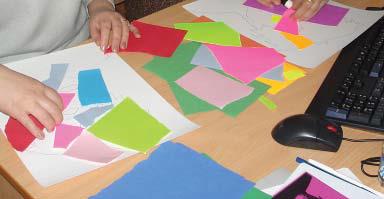The following assessments can be used for this lesson using the downloadable assessment rubric.
- Aesthetics 1
- Communication 3
- Creative process 5
- Creative process 6
- Critical thinking 1

After students have glued their final color combinations down onto the paper:
The following assessments can be used for this lesson using the downloadable assessment rubric.